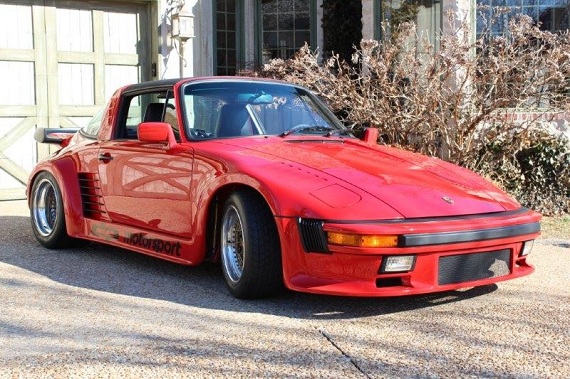I’ve spent quite a few recent posts examining alternatives to my dream life-machine, a VW Westy Syncro. We’ve seen G-Wagens and O309s, to Mogs and Pinzgauers, and even two-wheel drive Westys, all looking for a go-and-live anywhere megavan. The reason I’ve spent so much time looking at these other options is that while $15k for a 70s 4×4 seems significant, $65k for a 1991 Volkswagen seems UTTERLY BONKERS. And that’s not even the top of the Sycnro Westy market! But alas, if you had an extra $50k to spend on a Mog after you spent $15k, you could probably make it pretty fricking awesome. It’d be on off-the-wall choice, but you still wouldn’t get your card to the cool-kid club, which is stingily only handed out to Vanagon owners whose vans also have name-brand pop-tops and transfer cases. But like the 911 or a Ferrari, there’s a reason for the ever-building legend of the “right ones.”
Month: February 2014
When it first arrived on the scene, the Mercedes 190 ruffled a few feathers, as traditional Mercedes buyers were fearful that a small Benz might cheapen the brand image. Fast forward 30 years since its arrival on the scene, and it’s hard to imagine this conservatively styled, if compact sedan, offending anyone who is a fan of the marque, such has been the proliferation of new models in the lineup. Having grown up with a 190E 2.6 in our family, I’m a big fan of this car’s competent performance and classic build quality. It’s a car that did everything well yet didn’t shout about it. This 190E for sale in Germany isn’t a 2.6, but comes with a decent amount of kit and a 5-speed manual gearbox to get the most out of the powerplant.
Today, we’re featuring two four cylinder 190Es, one here in the US and another for sale in Germany. First, let’s take a look at a 190E 2.3 for sale in Kentucky.
Click for more details: 1991 Mercedes-Benz 190E 2.3 on AutoTrader
Comments closedPorsche has always enjoyed providing its customers with special edition models that celebrate some aspect of the marque’s heritage. Such is the case with this 1989 Porsche 911 25th Anniversary Edition (also called the Silver Anniversary Edition) in Silver Metallic. The 25th anniversary of the 911 fell just prior to Porsche’s extensive redesign of the model that would mark the end of the classic 911 body. What better time to release a limited edition anniversary model? These cars were mechanically similar to a standard 3.2 Carrera, featuring a 3.2 liter flat-six engine producing 215 hp mated to the G50 5-speed transmission. The 25th Anniversary Edition featured a host of leather interior upgrades as well as body-colored Fuchs wheels and front and rear spoilers. Though the upgrades are simply cosmetic the 25th Anniversary models have been valued slightly higher by most collectors and with time should continue to see rising values.
CLICK FOR DETAILS: 1989 Porsche 911 25th Anniversary Edition on eBay
4 CommentsIt’s been only a few weeks since I looked back at a super black DP935 that popped up for sale again with no changes but a hefty price increase. Well, today there is another DP modified car; this time, a claimed 1 of 1 Targa model built from a 1988 911. One of the criticisms of the black DP was that because of many changes over it’s life, it was effectively a highly modified turbo with a DP body kit. Today’s car suffers from the same fate, in a way – though it’s much more original. Bought in Germany and delivered to DP Motorsports, this Targa got the full external DP kit and some gorgeous BBS magnesium race wheels as well as a lowered suspension – but critically, no engine modifications seem to have made their way into this car. Afterwards, the interior was modified into the red/black combination that it currently sits in. With very few miles, this may be one of the more unique period-correct pieces in Porsche tuning history available right now:
CLICK FOR DETAILS: 1988 Porsche 911 Targa DP935 on eBay
6 CommentsFor German car fans, Porsche so defined endurance motorsports that BMWs serious efforts in the late 1970s and early 1980s often go overlooked. But if you really wanted to go racing with the big boys in the 1980s and the premium rides from Zuffenhausen were out of your reach, you might just have looked towards March engineering for the solution. March was cutting edge then, a staple in the 1970s F1 scene with some unorthodox designs. With the new prototype categories in the 1980s, March produced a series of prototypes that were developed out of a customer BMW M1 that March modified. After some development, the March 83G and later 86G proved not particularly competitive to the much more highly developed 956/962s, but did win the 1984 Daytona 24hrs with Andial Porsche power. BMW also signed up with March for a run at IMSA GTP with a development of the 320i Turbo Group 5 and Formula 1 engine producing up to a reported 800 horsepower. In qualifying trim for Formula 1, these M12/13 motors could twist around 1,400 horsepower out of that small displacement. With Formula 1 and sports car racing legends David Hobbs and John Watson amongst the ranks of drivers, it looked like a sure bet for some wins. It was for naught, though, as Porsche and later Nissan and Toyota dominated IMSA into the 1990s. BMWs efforts are nearly forgotten, and that spells value in the used prototype market today:




